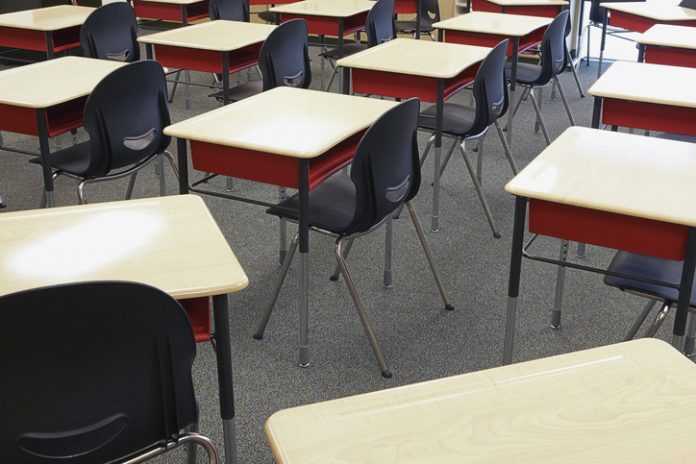Children in red states spent twice as much time in the classroom during the pandemic as those in blue states, according to a new report.
Utilizing data from Burbio, the education advocacy group The 74’s report extrapolated on disparities in learning time from September 2020 through May 2021. Red states, the study found, offered 432 more hours of in-person learning than blue states. States that voted red in the 2020 elections offered in-person learning 74.5 percent of the time, compared to 37.6 percent in blue voting states, the organization found.
Burbio has tracked school closures since the start of the pandemic, keeping tabs on in-person, remote, and hybrid offerings in states with real-time data. It soon became clear to The 74 that closures in various states were falling along party lines.
“The 74 applied our data from a unique angle and we were happy to be able to provide hard numbers to measure against,” the founder of Burbio, Dennis Roche, told Health Care News. “While there was a general understanding of the political differences between school opening strategies, this was able to quantify it.”
More Facetime, More Success
The “time equals learning correlation” has been debated for years, but school closures during the pandemic provided a ground for national data collection.
One of the first reports was in December by McKinsey. Researchers reviewed data from a number of sources and found in one sample, by the fall of 2020, students “lost the equivalent of three months of learning in mathematics and one-and-half months of learning in reading,” the report states.
“The learning loss was especially acute in schools that predominantly serve students of color, where scores (from the Curriculum Associates i-Ready platform assessment) were 59 percent of the historical average in math and 77 percent in reading,” the report states.
The Associated Press found school districts across the nation reported failures as much as two to three times as in previous years, with learning loss as high as 66 days in blue-voting states.
A February report by Amplify states that although reading losses were the same across all demographic subgroups in virtual settings, deficiencies were concentrated among Black and Hispanic students in the early grades. A March report by Education Trust cited a national survey that found children in high-poverty districts spent more time on “review” in virtual classrooms than they did learning new material.
At least one school district is fighting back: the Gary, Indiana school district is surveying parents to determine interest in lengthening the school year for 2021-2022. Other districts are starting their school year earlier than usual, Burbio found.
“Research indicates programs that offer 44 to 100 hours of additional instruction have an impact on student learning,” although, “the effectiveness depends on the subject area,” the Education Trust found.
Some research indicates two of the best ways schools can address lost learning is with targeted intensive tutoring and expanded learning time.
History of Classroom Lockouts
The American Federation of Teachers and the National Education Association, the nation’s dominant teachers’ unions, have been outspoken proponents of school closures since the start of the pandemic. Union leaders demanded vaccinations for a return to in-person learning, even as the U.S. Centers for Disease Control deemed the shots unnecessary for schools to reopen. The unions support widespread COVID vaccination of children under the age of 16 for teacher safety.
The unions carried much influence with the CDC guidance on school reopening, according to emails released through a Freedom of Information Act request. By May, the unions relented to reopening classrooms, with AFP President Randy Weingarten pledging commitment to five days of classroom learning starting in the Fall of 2021 and offering a $5 million campaign “to make it happen.”
As of June 29, Burbio reports all but two states, California and Hawaii, are back to traditional 5-days a week in-person learning, while nine have hybrid instruction still in place.
Ashley Bateman (bateman.ae@googlemail.com) writes from Virginia.
Internet info:
“One Fate, Two Fates. Red States, Blue States: New Data Reveal a 432-Hour in-Person Learning Gap Produced by the Politics of Pandemic Schooling,” The 74, June 9, 2021.





















